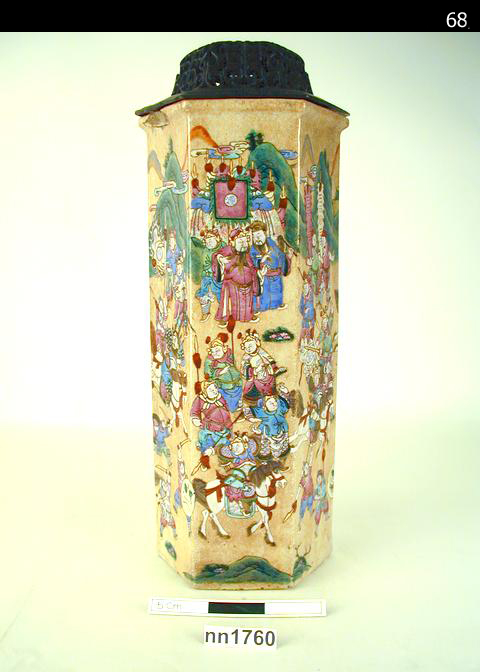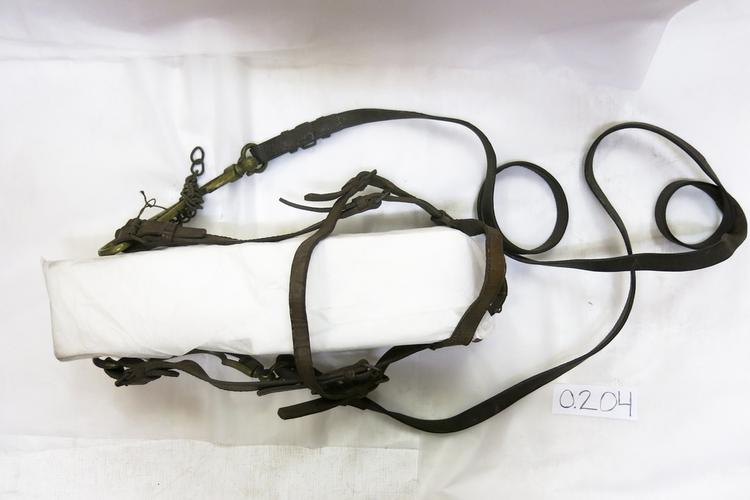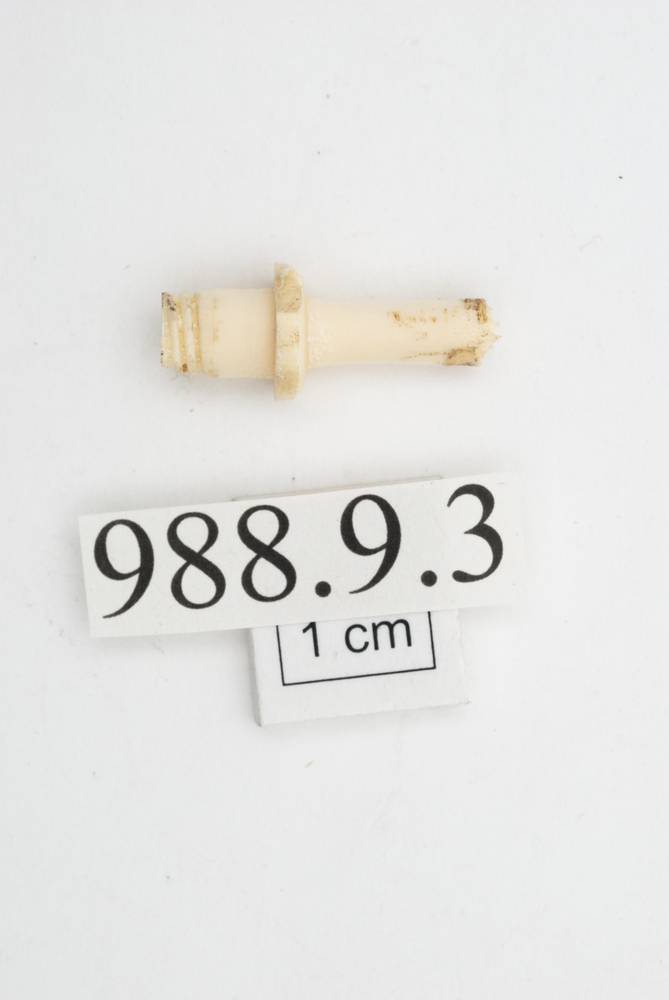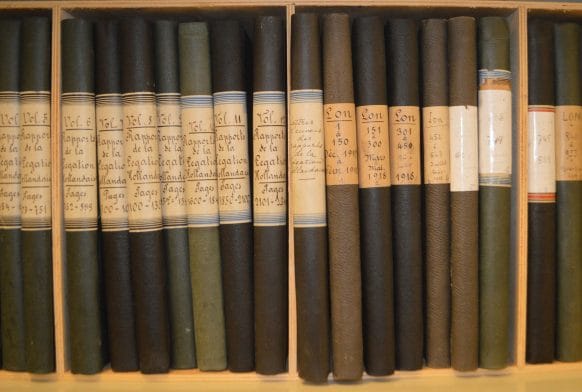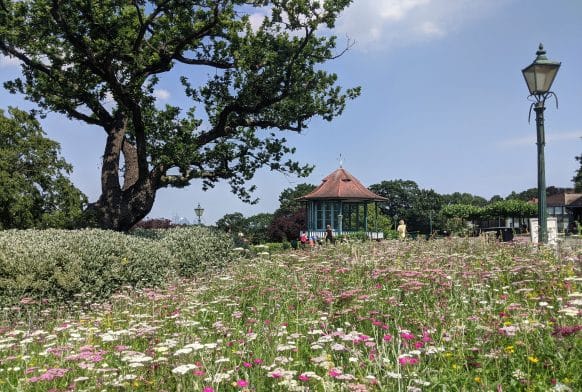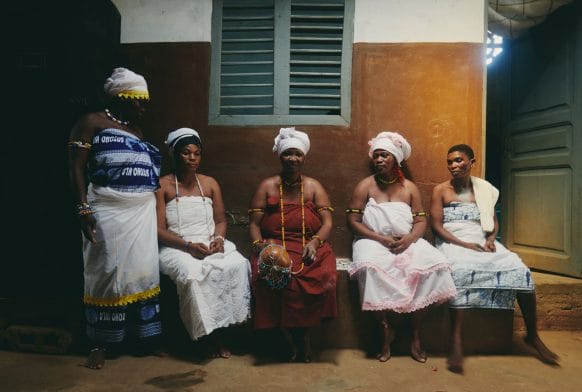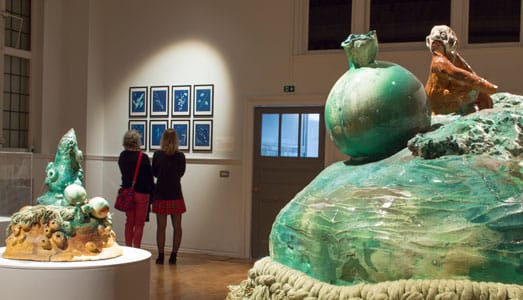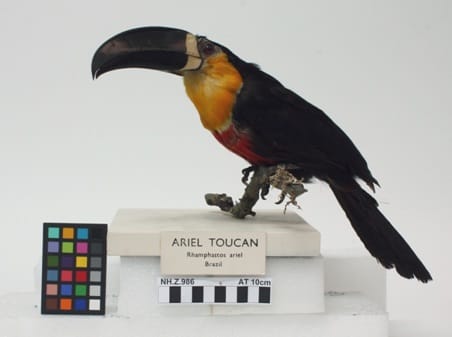
Maasai neck ring, 'meringet', made from leather decorated with small blue and white beads and large green beads, with a long multicoloured beaded front piece. Bought MEM from the African Center for the Education Centre.
Manufacture continued:
Bead work is common throughout East and Southern Africa and the style varies from one culture to another. It is usually carried out by women, perhaps because their smaller hands are more nimble for the delicate work. However, it is a relatively modern practice since beads first arrived in Africa as items of trade. Introduced by Arab traders sailing down the east coast, beads were exchanged for Ivory and other precious things. This is an indication of how highly they were prized. The earliest Maasai beaded jewellery was made from large red beads manufactured in Holland and dates from around 1850. Although Venetian glass beads were also imported, the major influence on bead work in the region came from the importation of less expensive tiny, coloured glass beads from Czechoslovakia about 100 years ago. These beads had pre-drilled centre holes so they could be easily strung on thread and came in a wide variety of colours. The peoples of East and Southern Africa used these colours to reflect their traditional beliefs and legends. Before the arrival of beads coloured natural materials such as seeds were already being used to reflect beliefs. Early East African peoples seemed to have favoured the colours black, red and white. Perhaps this was linked to the Maasai legend of the two gods, one black and the other red, who represented good and evil. (See connected stories).
Maasai beadwork uses small blocks of colour divided by bands of contrasting colour. The use of highly contrasting colours is considered to be very pleasing to the eye. Maasai Primary colours are; white, red, green, blue, and orange. Other colours such as yellow or black are Secondary colours. If a certain Primary colour is unavailable then it may be substituted by a Secondary colour, for example blue may be used to replace black, but this is considered to devalue a piece of work.
RELATED OBJECTS: Maasai Milk Gourd on display HOB 28a
Information compiled by Rethinking Relationships researcher, Ken Simiyu: This is a maasai traditional ornament known as meringet similar to the modern day necklaces. It is culturally significant because for girls and young women it marked the coming of age when one is has reached the age she can be married. Traditionally, meringet was made by young girls between the ages of 8 and 14, hough bead work has been a long term engagement which means old women also engage young girls as a training session. Meringet was made from leather and decorated with blue, red, green and orange beads, some hanging on the front. The beads are threaded together then sewn onto a flat leather neck ring in a variety of geometric patterns in variety eye catching patterns. Other objects that may be used alongside it Other objects that are used alongside meringet are the leather bangles, earrings and armlets which are worn during special occasions such as dowry negotiations, wedding and during rite of passage. In deed there have been variations of the object as time goes by and natural resources dwindles. In the contemporary dispensation, other materials include plastic and metal beads of different colours which are drilling in the middle. There is differences between the adult and child necklaces whereby children’s tend to be smaller and have fewer beads. Traditionally, this object was meant to symbolize rite of passage, however with the changing times and inter-cultural interactions entrepreneurs have seized the opportunity and now it is being made and sold on commercial basis in open air markets, online markets such amazon and local and international supermarkets. The real object is made up highly contrasting colours considered to be very pleasing to the eye. Maasai Primary colours are
Neck rings like this would be worn on a daily basis and would show aspects of a woman's status and wealth including their age, marital status, and even how many sons she has. As a woman grows older, she adds to her necklace collection and the necklaces stack up and overlap.



